Okay. We women all know we have “girl parts’ and “lady bits” and what Oprah calls as a Va-ja-ja, but it’s time to start acting like grown-ups and refer to the parts of your genitals by their real names. I think the reason we have so many “nick-names” for the vagina (or more accurately the vulva) is that our society is afraid to take it seriously, or women seriously as sexual beings. And, while we are making lots of progress, when grown women still refer to a vagina as a Va-ja-ja like they were in kindergarten, it makes me think they are ashamed or misinformed. So, read this article and be proud of your sexual anatomy, and then you can go back to calling it a pussy, cunt, love muffin, beaver, fur burger or whatever your favorite appellation may be. Just don’t call it a Va-ja-ja or I’ll sit you in the corner with the dunce cap on your head!
Female Genitalia
The female genitalia is made up of the vagina or internal cavity where the G-spot is located, and the vulva which consists of a grouping of the external organs including the vaginal opening, the labia (majora and minora), the clitoris, urethra and the area over the pelvic bone called the mons veneris or Mound of Venus.
External Organs: Mound of Venus
The mons veneris (Latin for “Mound of Venus”) also know as the mons pubis (Latin for “pubic mound”), or the mons, is the fatty tissue that covers the public bone in women above the genital region. The size of the mons pubis is related to the general level of body fat a woman has. With the onset of puberty, the area becomes sensitive to the increase of estrogen, causing the mound to swell distinctly, and the area to grow public hair.
The “Mount of Venus” divides into the labia majora (literally “larger lips”) on either side of the furrow, known as the cleft of Venus, that surrounds the clitoris, vaginal opening, and other structures of the vulva. It acts as a buffer for the public bone during vigorous sexual intercourse. It is a highly erogenous area supplied with nerve endings and can be stimulated through massage which transmits exciting sensations to the vaginal area. Some women find this so sexually arousing that they can be brought to orgasm through massage of this area alone.
The Vulva
The vulva is the region of the external genital organs of the female, including the mons veneris, the labia majora, labia minora, clitoris, bulb of the vestibule, vestibule of the vagina, greater and lesser vestibular glands, and vaginal orifice. The vulva is perhaps the most sensitive part of the female sexual organs, as it houses the clitoris and is full of nerve endings. The vulva has been greatly overlooked as society believes the female sexual anatomy as nothing more than a vagina. However, the vulva and its many amazing parts that work together to give women pleasure are much more that a hole that babies come out of or a place to stick a penis. The female sexual anatomy is not just reproductive, but sexual, sensual and able to give us a multitude of pleasure.
Structures of the Vulva: The Labia
The outer labia (labia majora) covers the entrance to the vagina and acts as a barrier for protection to the inner labia (labia minora) and the clitoris. The labia majora runs from the pelvic bone above the clitoris (pudendal cleft) to the perineum (the spot between the vulva and the anus). The cleft between the labia majora is called the pudendal cleft, or cleft of Venus, and it contains and protects the other, more delicate structures of the vulva.
The color of the outside skin of the labia majora is usually close to the overall skin color of the individual, although there is considerable variation. After the onset of puberty, the mons pubis and the labia majora become covered by pubic hair. This hair sometimes extends to the inner thighs and perineum, but the density, texture, and extent of pubic hair coverage varies considerably. The skin may have the same wrinkled appearance as that of the male scrotum, their male counterpart. When a woman is sexually aroused, the labia majora can become bright red in color because of the increased blood flow to the area.
The labia minora (also called “Nymphae”) are two soft folds of skin within the labia majora that form a hood for the clitoris where they meet at the top. While labia minora translates as “minor (or small) lips”, often the “minora” are of considerable size, and sometimes protrude outside the “majora”. The labia minora are crisscrossed by a very sensitive web of nerves which react strongly to touch, and therefore play an important part in the sensory pleasure of most women and their attainment of orgasm. The labia minora are made up of soft spongy erectile tissue containing a dense concentration of blood vessels. During sexual arousal, blood collects in them, causing them to swell and increase in size, as well as change color.
The Clitoris
The clitoris is located at the front top of the vulva, between the folds where the labia minora meet. The clitoris has only one purpose, to give women sexual pleasure. It is as important to a woman, as is a penis to a man. The clitoris is formed from the same tissues as is a penis, and for the most part, functions the same as a penis.
The visible portion of the clitoris is the clitoral glans. Typically, the clitoral glans is roughly the size and shape of a pea, although it can be significantly larger or smaller. The clitoral glans is made up entirely of soft erectile tissue called corpus spongiosum. When a woman experiences sexual arousal her glans fills with blood and becomes slightly larger and more sensitive. The glans of the clitoris has just as many nerve endings as does the glans of the penis, just in a much smaller area. This results in the clitoris being extremely sensitive. The size of a clitoris does not determine how sensitive it is, as the number of nerve endings is reportedly always the same regardless of size.
The point where the labia minora attach to the clitoris is called the frenulum clitoridis. The frenulum indicates where the urethral outlet would have been located had the clitoris developed into a penis during fetal development. This attachment results in the clitoris being indirectly stimulated by the movement of the labia minora as the penis enters and exits the vagina during intercourse. For a small percentage of women, this stimulation is sufficient to produce an orgasm, when combined with the sensations caused by the penis caressing the vaginal wall.
A prepuce, or clitoral hood, is similar to a man’s foreskin and normally covers and protects the clitoris. However, in women with particularly large clitorises or small prepuces, the clitoris may be partially or wholly exposed at all times. Often the clitoral hood is only partially hidden inside of the pudendal cleft.
Parts of the Clitoris
Many people think that the clitoral glans (that part visible to the eye) is the only part of the clitoris. But, the clitoris is a complex structure with the glans being only the tip of the iceberg, so to speak. The whole clitoris is shaped like a wishbone with the glans being the top external part that meets between the two “legs”. From the glans the clitoris extends internally for several centimeters, into the body of the clitoris known as the crura, which are two cylindrical shaped structures comprised of erectile tissue called corpora cavernosa, which appear to be only one erectile structure. From there, the crura branches into a pair of “legs” known as the Bulbs of the Clitoris or “Bulbus Vestibuli” which run underneath the labia minora.
Masters and Johnson were the first to suggest that the clitoral structures surround and extend along the vagina, determining that all orgasms are of clitoral origin. More recently, Australian urologist Dr. Helen O’Connell, using MRI technology, noted a direct relationship between the legs or roots of the clitoris and the erectile tissue of the clitoral bulbs and corpora, and the distal urethra and vagina. She asserts that this interconnected relationship is the physiological explanation for the conjectured G-spot and experience of vaginal orgasm taking into account the stimulation of the internal parts of the clitoris during vaginal penetration. Many sexologists now agree that the clitoral structure is inter-related or connected to the G-spot, although note that the orgasms produced feel different.
During sexual arousal and orgasm, the clitoris and the whole of the genitalia engorge and change color as these erectile tissues fill with blood, and the individual experiences vaginal contractions. Masters and Johnson documented the sexual response cycle, which has four phases and is still the clinically accepted definition of the human orgasm. More recent research has determined that some can experience a sustained intense orgasm through stimulation of the clitoris and remain in the orgasmic phase for much longer than the original studies indicated, evidenced by genital engorgement, color changes, and vaginal contractions. It has been reported that 70% of women require clitoral stimulation to reach orgasm.
Internal Organs: The Vagina
The human vagina is an elastic muscular canal that extends from the cervix to the vulva. During sexual arousal the vagina expands in both length and width. Its elasticity allows it to stretch during sexual intercourse and during birth to offspring. Vaginal lubrication is provided by the Bartholin’s glands near the vaginal opening and the cervix which increases during sexual excitement, facilitating penetration by the penis or sex toys. The membrane of the vaginal wall also produces moisture, although it does not contain any glands. This reduces friction that can be caused as a result of various sexual activities.
The Hymen
The hymen is a thin (sometimes thick) crescent-shaped membrane of connective tissue which is situated at the opening of the vagina. As with many female animals, the hymen covers the opening of the vagina from birth until it is ruptured during sexual or non-sexual activity. With virgins, the hymen is thicker and either partially or fully obstructs the external opening to the vagina. As girls reach puberty and sexual maturation, the hymen becomes thinner. The hymen is most commonly broken due to sexual intercourse, but may be broken from other strenuous physical activities such as dancing, horseback riding, athletics, through pelvic medical examinations and by insertion of sanitary napkins or penetrative vaginal masturbation. Therefore, the fact that a hymen may be broken is not a sign that a girl is not a virgin. The first time the hymen is broken a woman may or may not experience pain, discomfort or bleeding. In some women, if the hymen is not broken during adolescence it may become necessary to open the hymen by surgical means.
The G-spot
The Gräfenberg spot or G-spot was discovered by Ernst Gräfenberg a German gynecologist who first described it as “an erotic zone located on the anterior wall of the vagina along the course of the urethra that would swell during sexual stimulation.” The area the G-spot occupies is called the urethral sponge and it is tissue that surrounds the urethra (the tube we pee out of) that swells with fluid during sexual arousal. It is associated with the prostate gland in men and is made up of a complex system of erectile tissue, secretion glands (the Skene’s gland), the internal pelvic nerve and muscles that engage with one another during your arousal cycle. In most women it is sensitive to pressure and stimulation which can lead to high levels of sexual arousal and powerful orgasms. The existence of a G-spot has been widely accepted and most popular sexology books treat it as fact. In one study of female ejaculation, 84% of the approximately 1300 professional women who responded reported a sensitive area in the vagina, and this was correlated with those who also reported ejaculation.
The G-spot has remained elusive in the past because in its sexually un-stimulated state, it is relatively small and difficult to locate, especially since you can’t see it like the clitoris. It can be found inside the vagina about 1-2 inches deep with your fingers by feeling around the front wall or roof of the vagina, just behind the pelvic bone. There, a wrinkly, prune-like tissue (the urethral sponge) will swell with fluid when aroused via firm, deep pressure, thus making it noticeable to touch.
The PC Muscle
The pubococcygeus muscle or PC muscle is a hammock-like muscle, found in both sexes, that stretches from the pubic bone to the tail bone. It forms the pelvic floor and supports the pelvic organs including the bladder, urethra and vagina. The PC muscle controls urine flow and contracts during orgasm as well as aiding in childbirth. Since the PC muscle also encircles the outside of the vagina, healthy PC muscles will improve sexual arousal. Strong PCs allow you to reach orgasm more easily, experience more powerful and pleasurable orgasms, and may even help you achieve multiple orgasms as you learn to better control and respond to your sexual arousal. Fit PC muscles also improve G-spot stimulation and can help you learn to experience G-spot orgasms and female ejaculation. Rhythmic squeezing of your PC muscles during intercourse or masturbation will help increase lubrication, stimulate the clitoris, and heighten the G-spot’s sexual arousal.
Okay, so now you know all the real names to the parts of your sexual anatomy, and how those amazing parts all work together to get you off. Great! Now go get off!


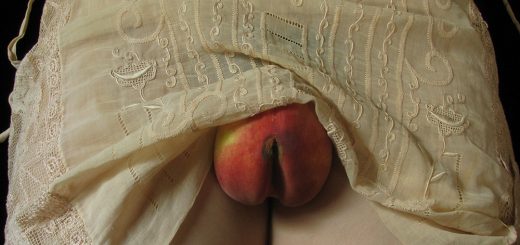
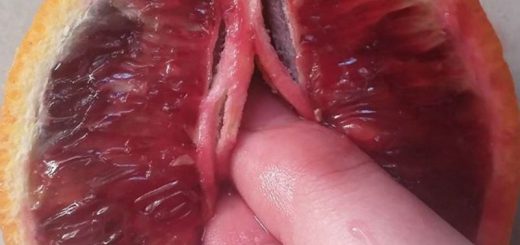
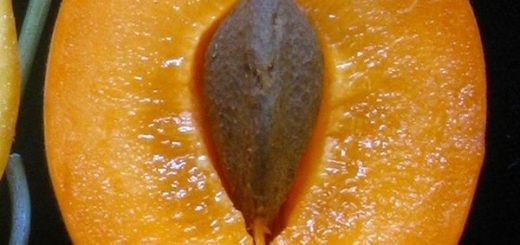

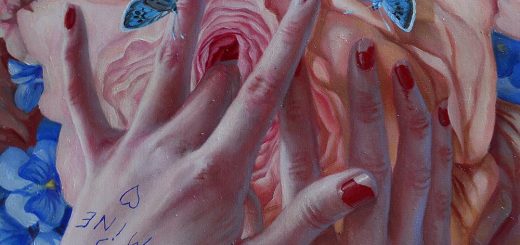
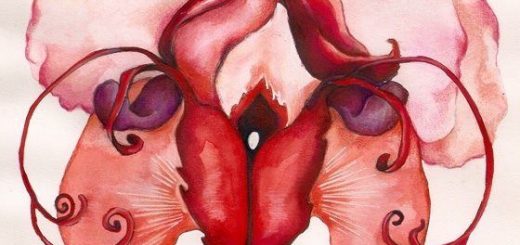




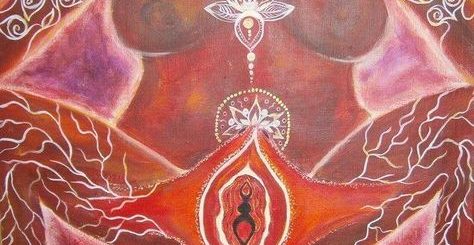
I’ve grown up feeling so deerssped about my oversized labia, thinking i will be rejected when with a partner, and I actually am starting to feel happy that this is classes as beautiful.. because I honestly thought I was abnormal. Besides, I feel sort of proud, that I didn’t physically need to stretch them because they are already large!